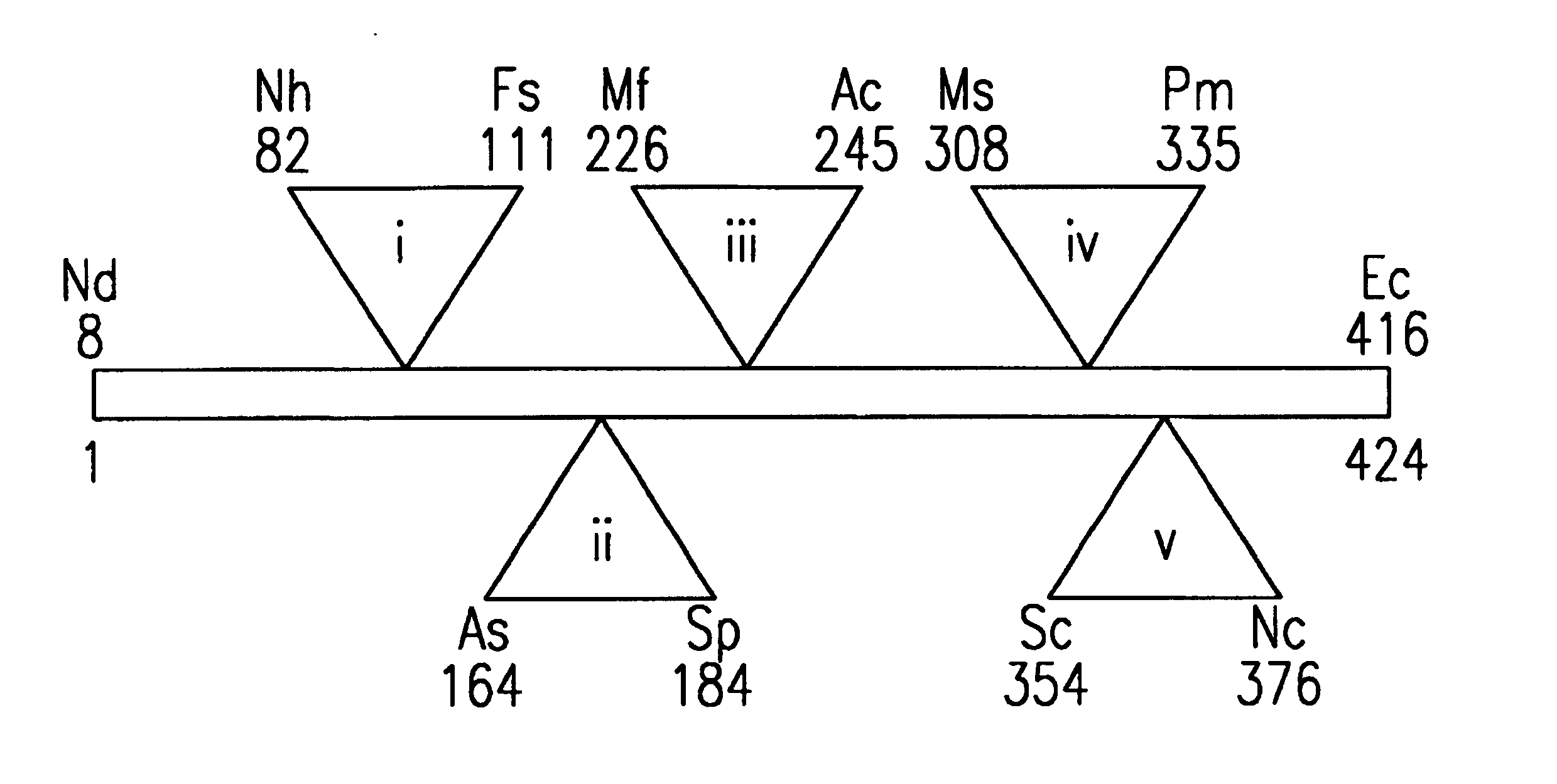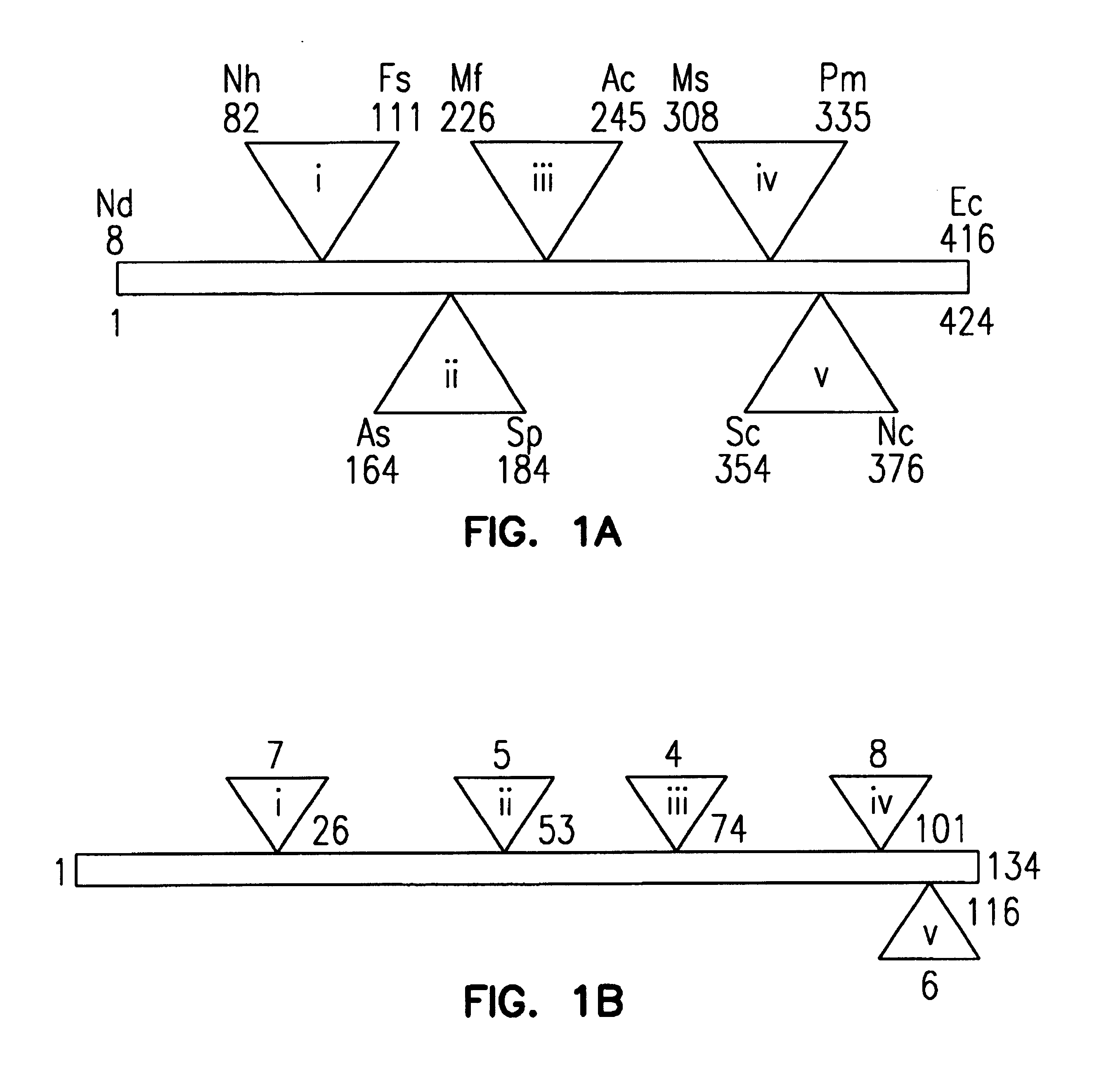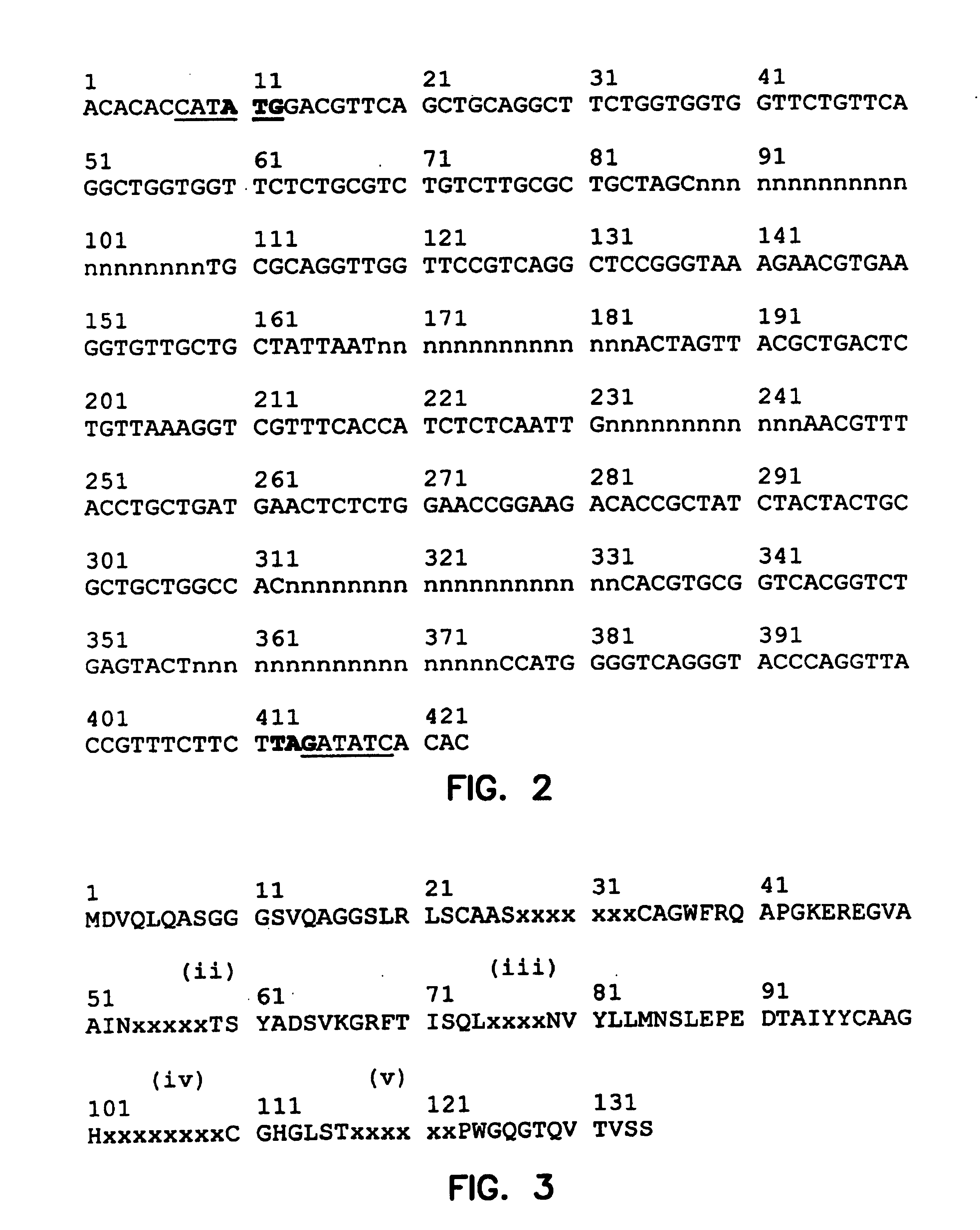Target recognizing binding agents
a technology of binding agents and targets, applied in the field of antibodylike binding agents, can solve the problems of large and complex antibody molecules, lack of suitable stability for long shelf life, and high cost and difficulty in obtaining
- Summary
- Abstract
- Description
- Claims
- Application Information
AI Technical Summary
Benefits of technology
Problems solved by technology
Method used
Image
Examples
example 1
Binding Agent Construction
Molecular Modeling:
[0216]The molecular modeling studies performed utilized two visualization programs, Swiss PDB Viewer (Guex and Peitsch, 1997) and Rasmol (Sayle and Milner-White, 1995). Model work was performed on a PC running Windows 2000, as well as a Silicon Graphics, Inc. Octane UNIX workstation. Additionally, the Cerius2 molecular modeling package from Molecular Simulations, Inc. was utilized on the Octane. Three dimensional structure files were downloaded from the Protein Databank as follows: 1bzq.ent, 1f2x.ent, 1 g6v.ent, i3v.ent, 1jto.ent, 1jtt.ent, 1jtp.ent, 1kxq.ent, 1amk.ent, 1am1.ent, 1b9b.ent, and
[0217]These files were used to analyze the three-dimensional structure of the proteins, and the chemical nature and identification of conserved and variant amino acids in the target contact regions and the amino acids involved in secondary structure maintenance. This information was utilized to design a parental consensus binding agent that could be ...
example 2
Biochemical and Biophysical Studies of Binding Agents
[0261]This Example illustrates some of the chemical, biochemical and physical properties of binding agents produced by the methods of the invention.
Purification of the Binding Agent:
[0262]The expression strategy utilized a typical T7 RNA polymerase over-expression system. The vector construct added a C-terminal hexa-histidine tag to the binding agent polypeptide in order to facilitate purification. BL21(DE3) cells containing the expression plasmid constructs were grown at 37° C. in Luria broth supplemented with 1% glucose and 60 μg / mL ampicillin from a 1% inoculum. IPTG was added to a final concentration of 0.5 mM when the cells had reached an A595 value of 0.8 (in approximately three hours post inoculation). Cell growth continued for five additional hours before harvesting. Typically, 5 g of cells was obtained per liter.
[0263]Cells were pelleted by centrifugation at 10,000×g for ten minutes and re-suspended in one volume of 10 mM...
example 3
Computer Generated Binding Agent Sequences
[0273]This Example illustrates how binding agents that can bind specific target molecules can be generated using a computer program provided by the invention.
Computer Modeling of the Binding Agent(s)
[0274]The parental binding agent polypeptide was 134 amino acids in length and had a total molecular weight of 12.8 kDa. FIG. 6 illustrates the three dimensional structure of the generic binding agent. The overall topology of the binding agents is that of a beta sandwich (depicted by arrows) stabilized by a central disulfide bond (not shown). The binding agents of the invention also have five loops (shown as thin strands that connect the arrows), which are the primary target recognition elements. The polypeptide sequence ends with a tail that can be used to anchor the molecule on the surface of a bead or other surface for use in diagnostic devices. The target contact region is defined by the spatial orientation of these loops.
[0275]A three dimens...
PUM
| Property | Measurement | Unit |
|---|---|---|
| pH | aaaaa | aaaaa |
| temperature | aaaaa | aaaaa |
| re-equilibrium time | aaaaa | aaaaa |
Abstract
Description
Claims
Application Information
 Login to View More
Login to View More - R&D
- Intellectual Property
- Life Sciences
- Materials
- Tech Scout
- Unparalleled Data Quality
- Higher Quality Content
- 60% Fewer Hallucinations
Browse by: Latest US Patents, China's latest patents, Technical Efficacy Thesaurus, Application Domain, Technology Topic, Popular Technical Reports.
© 2025 PatSnap. All rights reserved.Legal|Privacy policy|Modern Slavery Act Transparency Statement|Sitemap|About US| Contact US: help@patsnap.com



